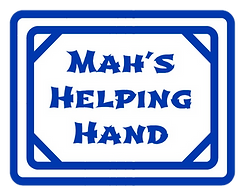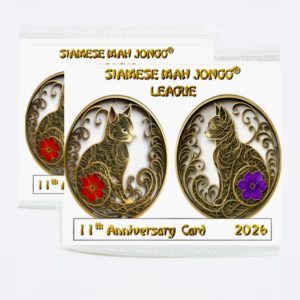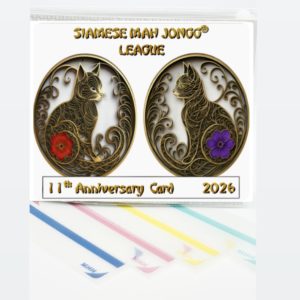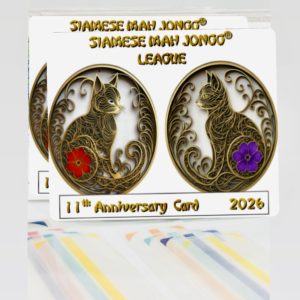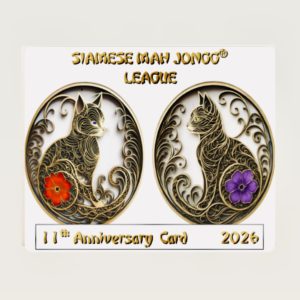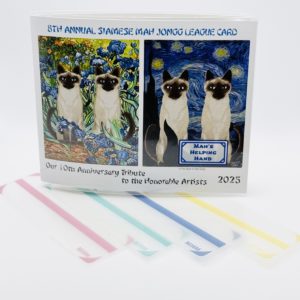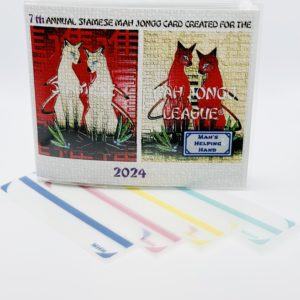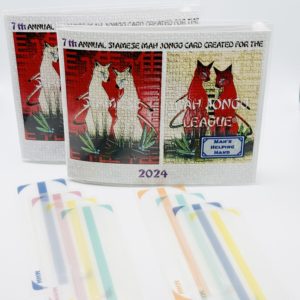Highlighters and
Siamese Mah Jongg®
Highlighters and
Siamese Mah Jongg®
Mah jongg HIghlighters - Great For Siamese Mah jongg®!
Benefits Of using Highlighters with SMJ
Mah Jongg Highlighters are a Must-Have for playing Siamese Mah Jongg®!
Why?
Because you will have twice as many tiles to work with and you will be following twice as many lines. As your hands evolve and likely change, simply pick up a Highlighter and move it to a new line that has started forming in your rack.
Siamese Mah Jongg® is a complex game, but our Highlighters make it easier to keep track of the lines you’re following, making the game more enjoyable and less overwhelming.
You’ll love using our Highlighters while tracking and considering all the various hands, working with two racks and strategizing for a DOUBLE Mah Jongg.
Our L Sleeve Kit w/4 Highlighters is the perfect complement and tool for playing Siamese Mah Jongg®! It comes with a Large Sleeve that fits the Large Siamese Mah Jongg® cards. (It also fits the Large NMJL cards.) Our Sleeve comes with 4 Highlighters in various colors to help you easily keep track of all your potential hands so you remain calm and focused as you play. Play with the Siamese Mah Jongg® cards for more fun and challenging hands.
Buy the Siamese Mah Jongg® cards along with our favorite products and watch the videos to learn how to set up to play. Links are below.

Siamese Mah Jongg® cards and kits
Mah jongg HIghlighters
Great For Siamese Mah jongg®!
Benefits Of using Highlighters with SMJ
Mah Jongg Highlighters are a Must-Have for playing Siamese Mah Jongg®!
Why?
Because you will have twice as many tiles to work with and you will be following twice as many lines. As your hands evolve and likely change, simply pick up a Highlighter and move it to a new line that has started forming in your rack.
Siamese Mah Jongg® is a complex game, but our Highlighters make it easier to keep track of the lines you’re following, making the game more enjoyable and less overwhelming.
You’ll love using our Highlighters while tracking and considering all the various hands, working with two racks and strategizing for a DOUBLE Mah Jongg.
Our L Sleeve Kit w/4 Highlighters is the perfect complement and tool for playing Siamese Mah Jongg®! It comes with a Large Sleeve that fits the Large Siamese Mah Jongg® cards. (It also fits the Large NMJL cards.) Our Sleeve comes with 4 Highlighters in various colors to help you easily keep track of all your potential hands so you remain calm and focused as you play. Play with the Siamese Mah Jongg® cards for more fun and challenging hands.
Buy the Siamese Mah Jongg® cards along with our favorite products and watch the videos to learn how to set up to play. Links are below.

